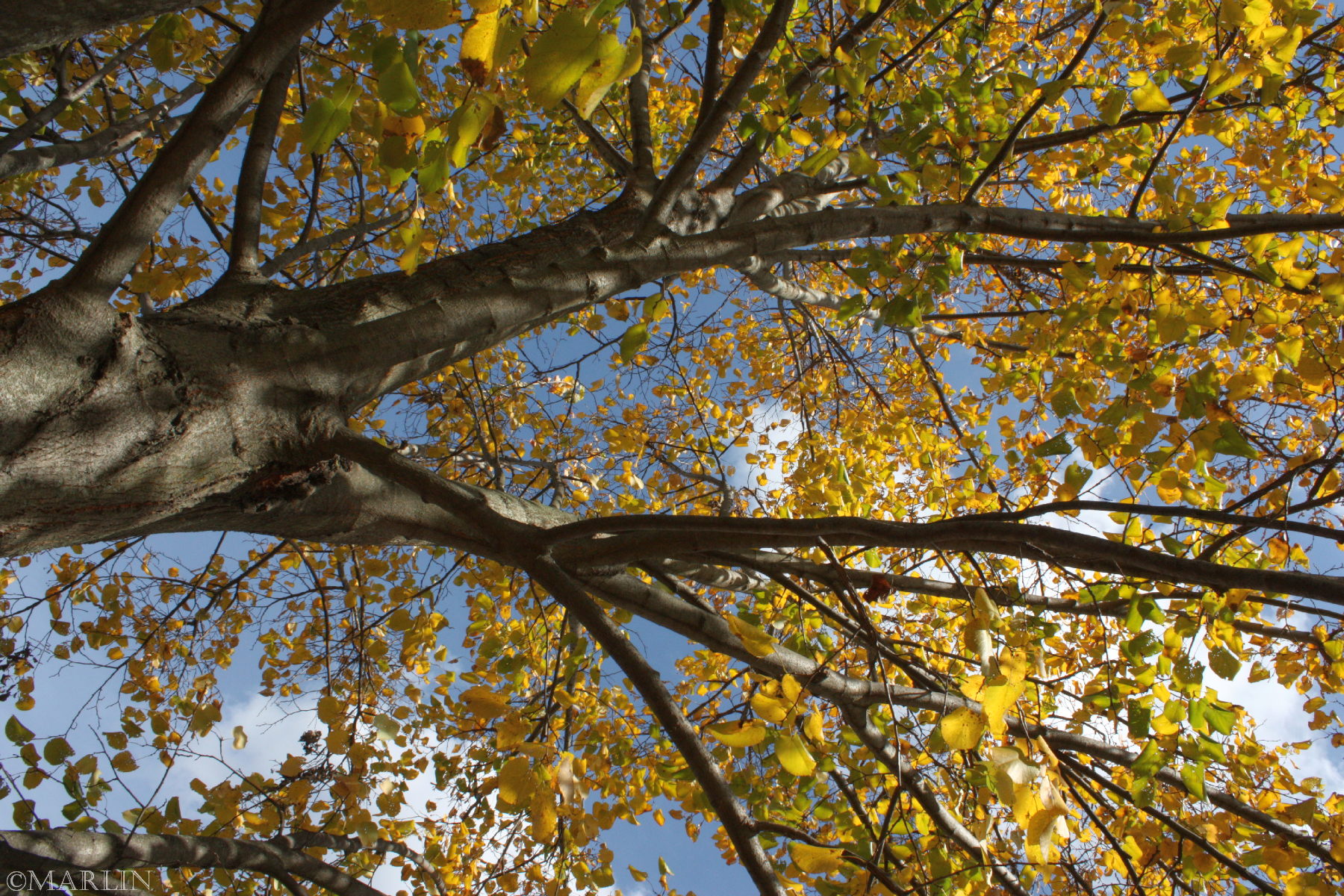Pendent Silver Linden – Tilia petiolaris
Family Tiliaceae – Basswoods, Lindens
Also called weeping silver linden, this tree grows to 60 feet. USDA hardiness zone 6
This tree is rather compact as lindens go. Branches should be well-spaced along a central trunk to allow for development of a durable structure. Left unpruned, crotches with embedded bark can develop but the wood is flexible so branches usually do not break from the tree. The tree is considered to have a strong branch structure.
This pendent silver linden is 20 years old [2]
The fragrant flowers of the Linden tree hang from the middle of leafy, ribbon-like green bracts in long-stalked clusters. The flowers are tiny, with 5 yellowish-white petals. During the last weeks of June and first weeks of July they exude a powerful, haunting scent that can be detected up to a mile away.
The flowers possess a nectar which attracts bees and produces a strong flavored honey. When this tree is in flower it will be full of bees, hence its common name “Bee Tree”. During the three weeks that the Lindens bloom, bees forsake most other flowers. The honey that they make of Linden nectar is white in color, and highly regarded. The flowers when gathered and dried can be used to make tea. Linden flowers are used in the manufacture of perfumes.
When the flowers go to seed they form small nutlets that contain 1 or 2 seeds each, clustered beneath large leafy wing bracts which act as parachutes as they carry the seeds to the ground. The fruits are woody and about the size of peas. The leaves are heart-shaped, 2-3 inches long. Linden wood is soft and creamy, and it is much favored by woodcarvers because of its workability (it is said to “cut like cheese”) and its even grain. In past centuries it was used to make ship’s figureheads and cigar-store Indians. Today it is used for broom handles, beehive frames, piano sounding boards and certain parts of guitars. — USDA NRCS Plant Fact Sheet
References
1. Keith Rushforth, Charles Hollis, National Geographic Trees of North America “Pendant Silver Linden”
2 Pendent Silver Linden, Morton Arboretum accession 218-90-2 photos by Bruce Marlin
3. Morton Arboretum, ‘Weeping Plants’
Family Tiliaceae – Basswoods, Lindens
50 genera and 400 species; widespread in tropical and subtropical regions, with relatively few species in temperate regions. Especially abundant in Southeast Asia and Brazil. The leaves of all the Tilias are heart-shaped and most are asymmetrical, and the tiny fruit, looking like peas, always hang attached to a ribbon-like, greenish bract.
Family Tiliaceae – Basswoods, Lindens
Trees Index | Pine Family | Beech, Oak | Nut Trees | Birch Family | Magnolias
Tree Encyclopedia / North American Insects & Spiders is dedicated to providing family-friendly educational
resources for our friends around the world through large images and macro photographs of flora and fauna.

